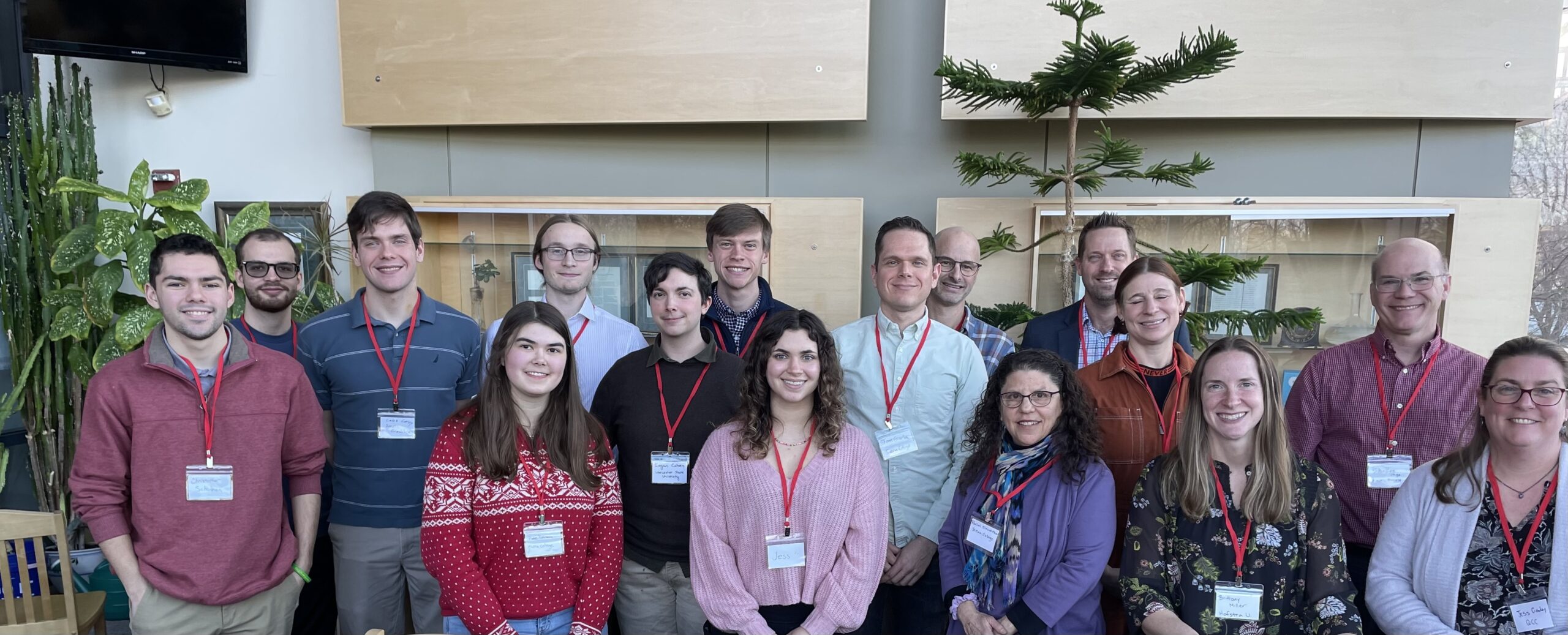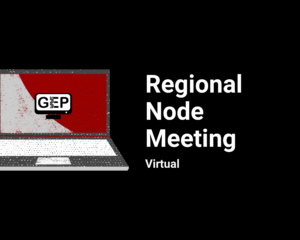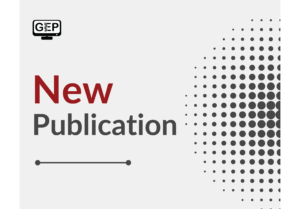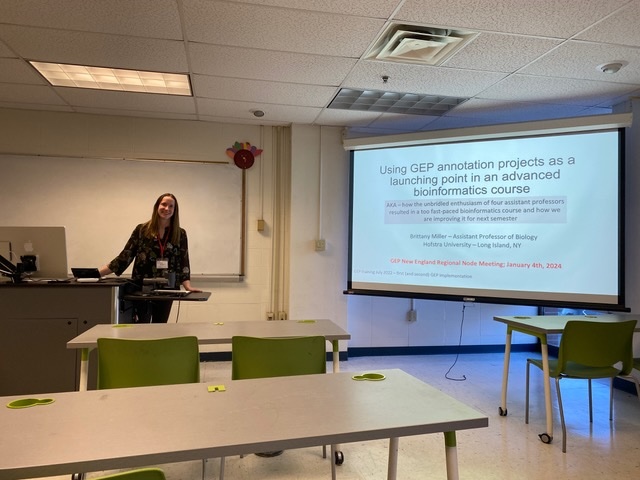
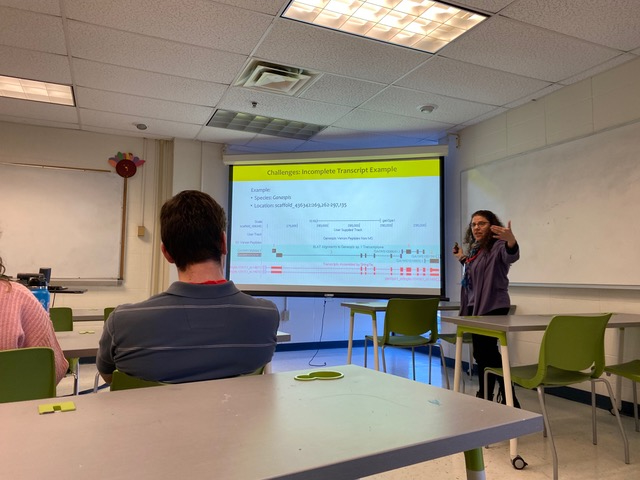
- Kate Putnam (Siena College, Giarla lab), presented “Akt and srl Genes.”
- Forrest Veilleux (Franklin Pierce University, Page lab) presented “Glycogen Synthase in D. bipectinata: How Fruit Flies Store Their Sugar.”
- Caleb Casey (Siena College, Tom Giarla’s Genomics and Bioinformatics course) enlightened us on “Discovery of a Putative Paralog to wat in Drosophila willistoni.”
- Chris Shulman (Siena College, Biochemistry course) gave a progress report on the wet lab wasp CURE (a collaboration with Lindsey Long, Marisol Santisteban and Nate Mortimer) in a poster entitled “Role of Glycolytic Enzymes in Parasitoid Wasp Infection of Drosophila: Heterologous Expression of Three Wasp Venom Pyruvate Kinases.”
- Tommy Anderson (Siena College, Sterne-Marr lab in collaboration with Nate Mortimer, Oregon State University) shared novel images from the SUNY Albany timsTOF MALDI instrument in a poster entitled, “Using Classical Histology and Mass Spectrometry Imaging to Study Parasitoid Wasp Infection of Drosophila Larvae.”
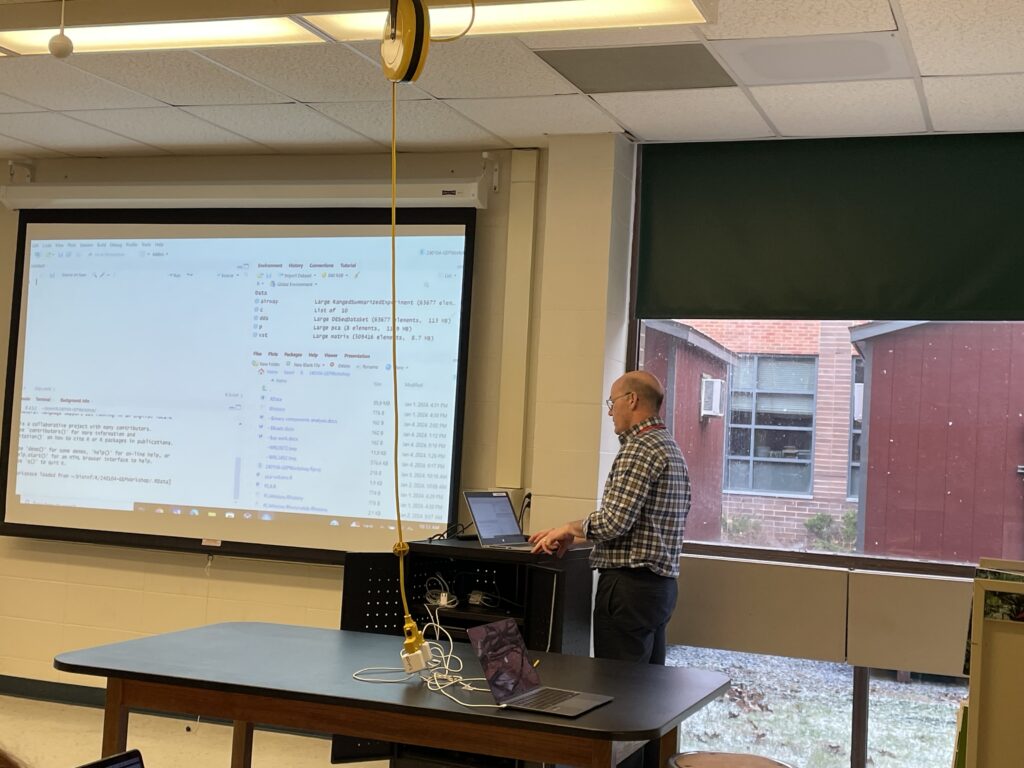
Special thanks to all our presenters and other participants for making this meeting highly successful! Thanks to Melinda Yang and Jenni Kennel, the Regional Node Director and Co-Director, for perfectly scheduling the planning benchmarks. Thanks to Sarah Potts for taking care of financial logistics allowing us to focus on the meeting itself. Thanks to student participant Isaiah Korostil (Siena College) for facilitating during the R workshops. Rachel Sterne-Marr, Tom Giarla, Daron Barnard, and Evan Merkhofer all contributed to making this meeting actually happen.
What worked well for your event that might help others plan similar events?
The timeframe that was set up by Melinda Yang, the Regional Node Director, was perfect for prodding us to complete the various steps in a timely manner. Working with Sarah Potts to take care of financial logistics was such a relief. We are lucky in having two GEP members at our institution so the organizer had help in making decisions and on-the-spot problem solving (no lighting in the room we were having dinner!).
What would your Node do differently based on your experiences?
Have a detailed checklist for the week before the event to include name tags, poster boards, clips, maps, uploading presentations, and confirming times with caterers.

